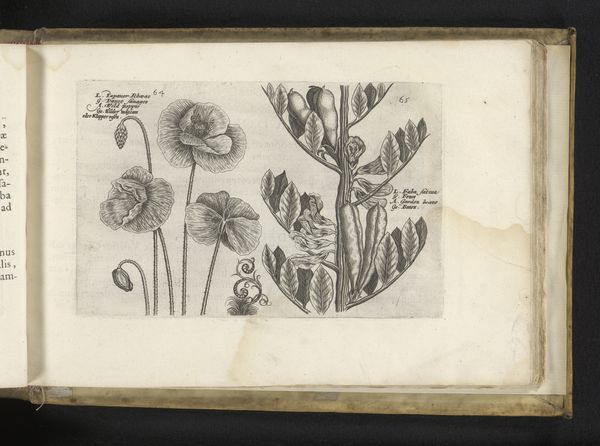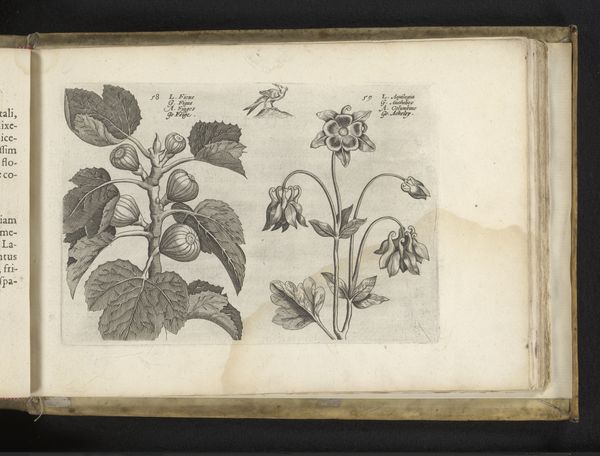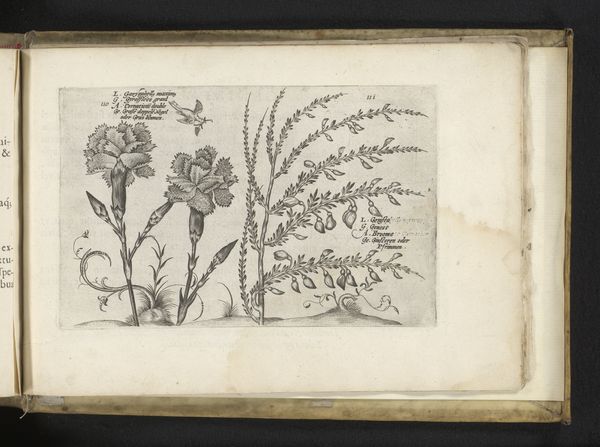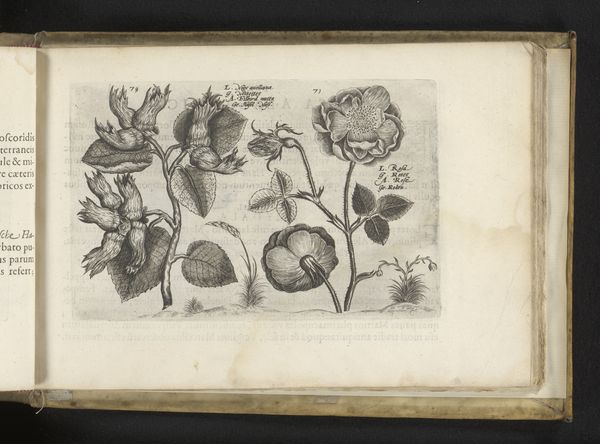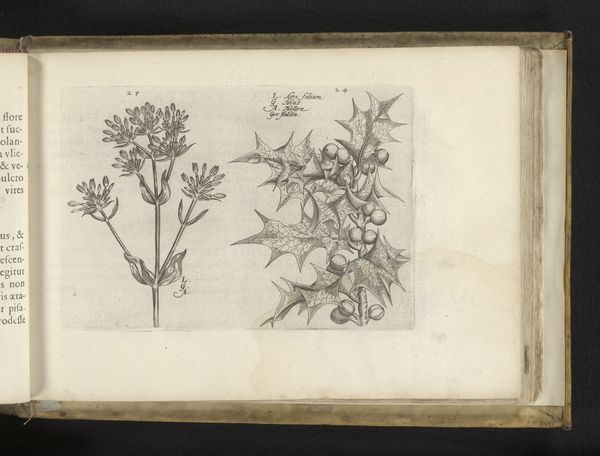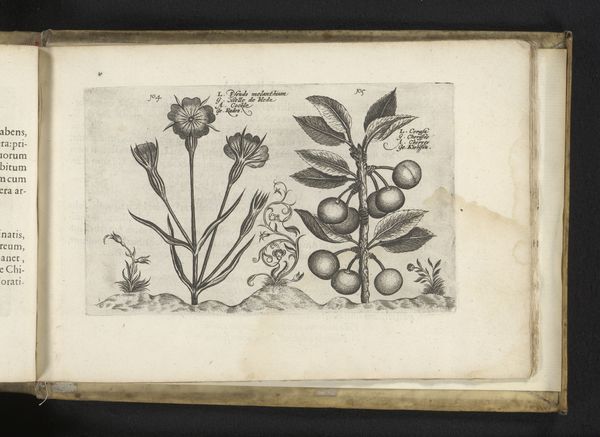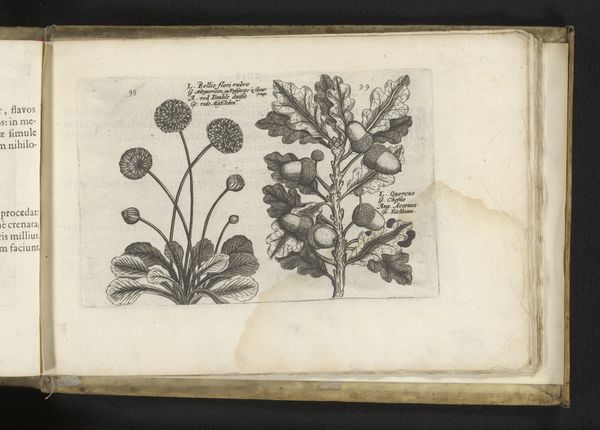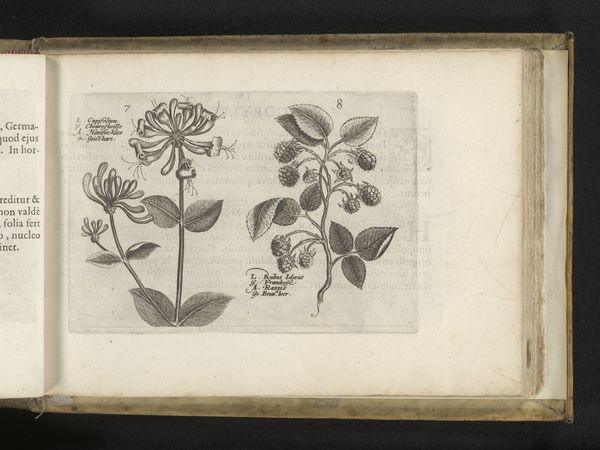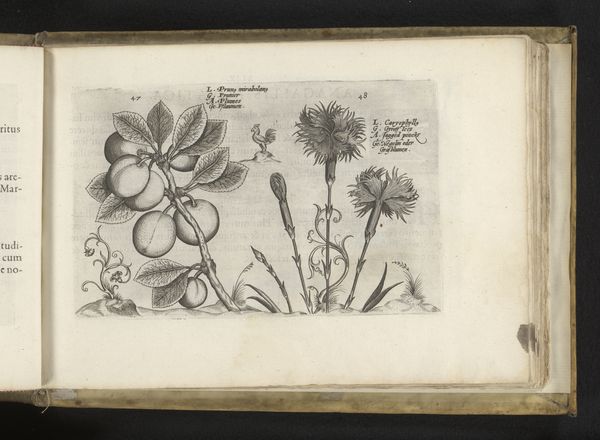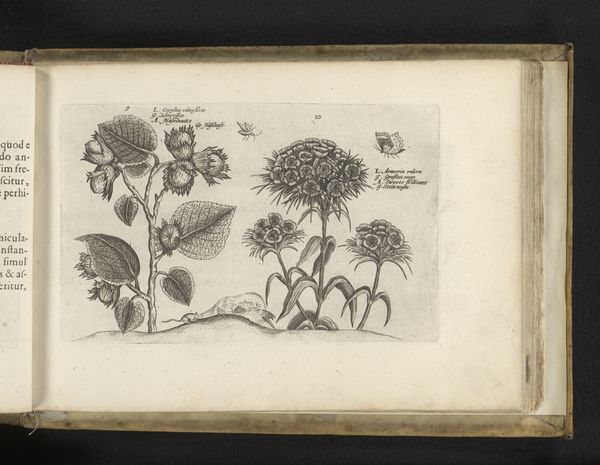
drawing, print, etching, paper, ink
#
drawing
# print
#
etching
#
flower
#
paper
#
ink
#
line
#
northern-renaissance
#
realism
Dimensions: height 125 mm, width 199 mm
Copyright: Rijks Museum: Open Domain
Curator: What immediately strikes me about this print is its delicate rendering. Editor: It's remarkably clean for a print from 1617. There is such sharp, deliberate line work, but it has a rather austere quality. Curator: It's an etching by Crispijn van de Passe the Younger, titled *Scherpe boterbloem en veldesdoorn*, residing here at the Rijksmuseum. These seemingly simple plant studies carry quite a symbolic load, speaking to cycles of life, mortality, and perhaps even resurrection. The buttercup, with its cheerful yellow— Editor: Which we only imagine here, of course, given the medium's limitations at that time. It’s interesting how the very act of isolating these specimens on the page almost transforms them into commodities, items to be possessed, understood, and ultimately, controlled. What materials were accessible dictated the images they could circulate widely. Curator: Precisely, there's that drive to classify and contain the natural world. In that era, botanical illustrations frequently held emblematic meaning. The buttercup, for instance, can symbolize ingratitude and childishness. Then, you have the field maple… Editor: A field maple’s seeds signify potential. There’s future nourishment held in these representations. We're not only presented with aesthetic beauty, but an investment into tangible processes. Did people actually go foraging and observe such species in a very specific area to ensure the possibility of rendering them so meticulously on plates? Curator: Indeed! Also, Northern Renaissance artwork, within this period, emphasized details for spiritual value through their observation. Every meticulous line testifies of our capacity of witnessing life as God granted it. Editor: You almost forget the intense labor of etching, biting, and printing in each careful impression. So much material practice that goes into circulating such images... What was the paper source like? How was it manufactured and distributed? Curator: Considering it, these images, far from simply documenting flora, operate on an intellectual level to the meaning of knowledge, salvation and temporality of life. Editor: So, more than a mere illustration of botany, this reflects the material means to reach different publics through widely used forms and techniques in Europe. Curator: A delicate interplay of symbolic language and acute observation. Editor: I appreciate seeing beyond the end result toward revealing its intricate social web of making.
Comments
No comments
Be the first to comment and join the conversation on the ultimate creative platform.
